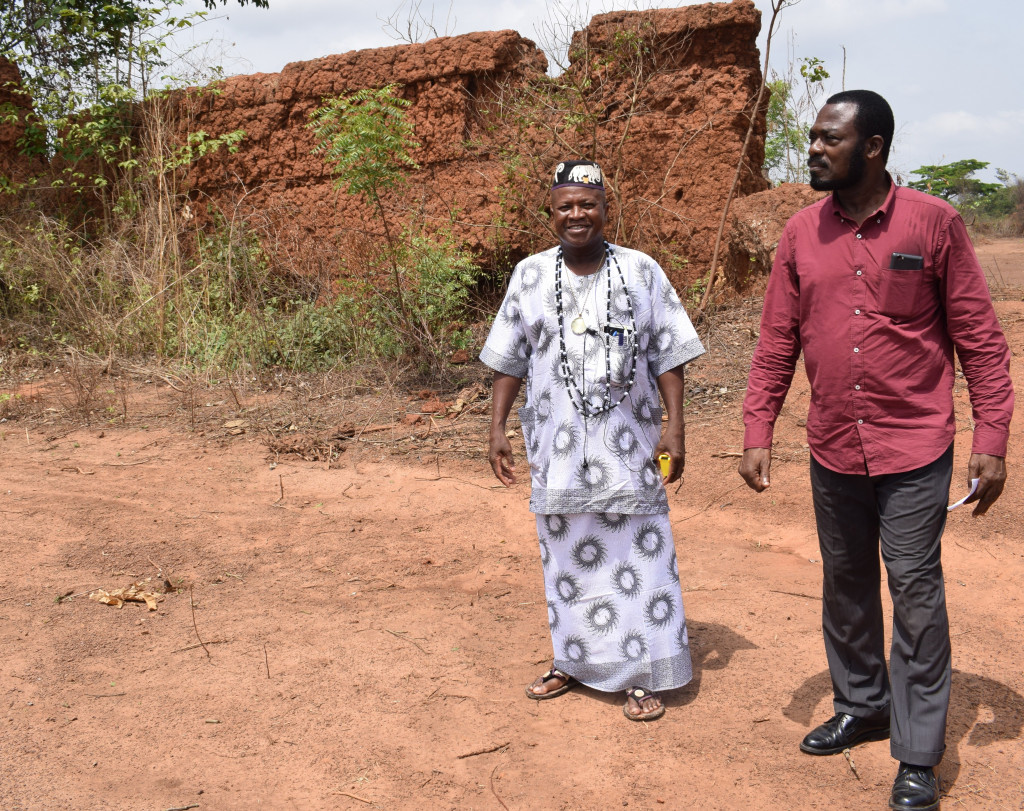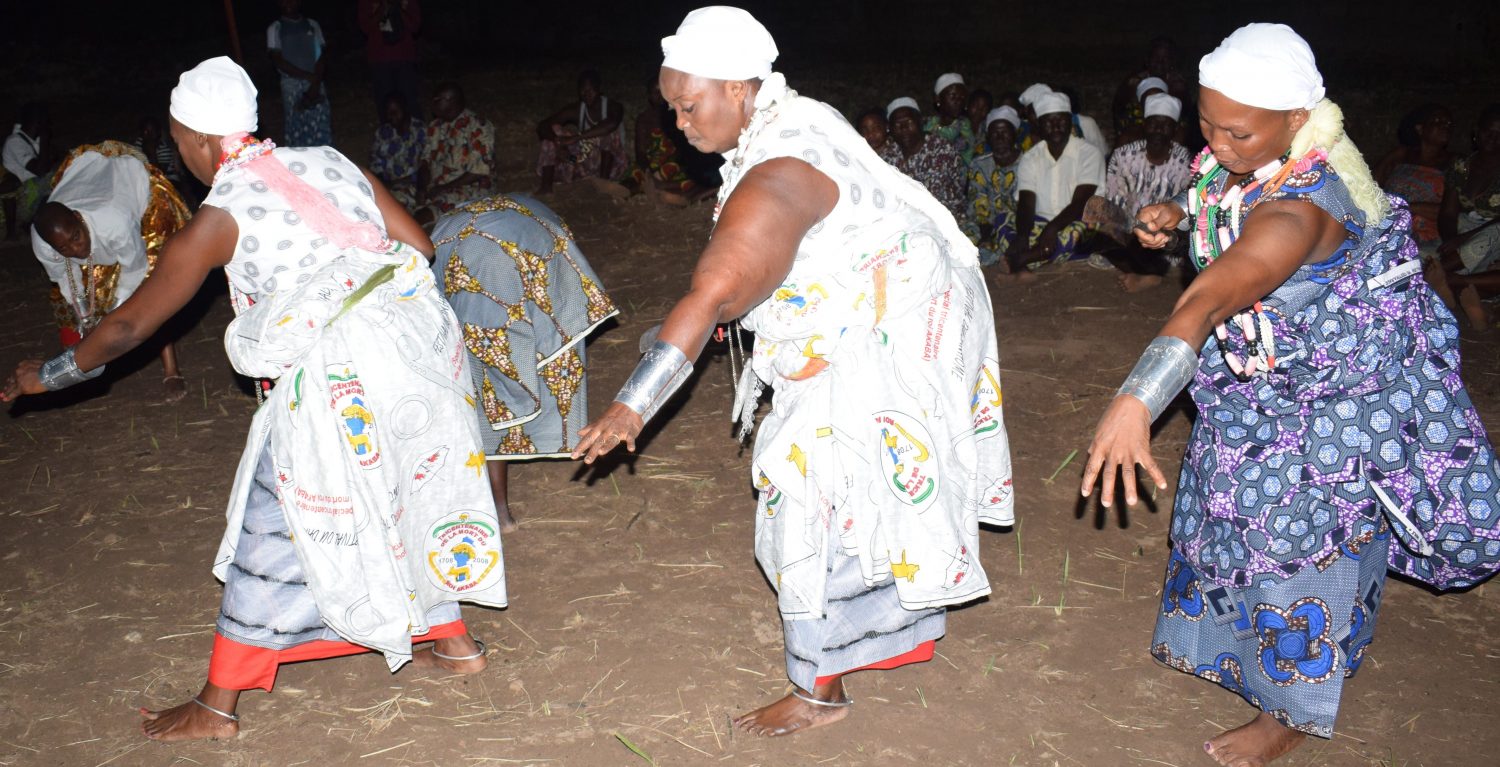CANA BOUNCES TO THE RYTHM OF ROYAL DANCE
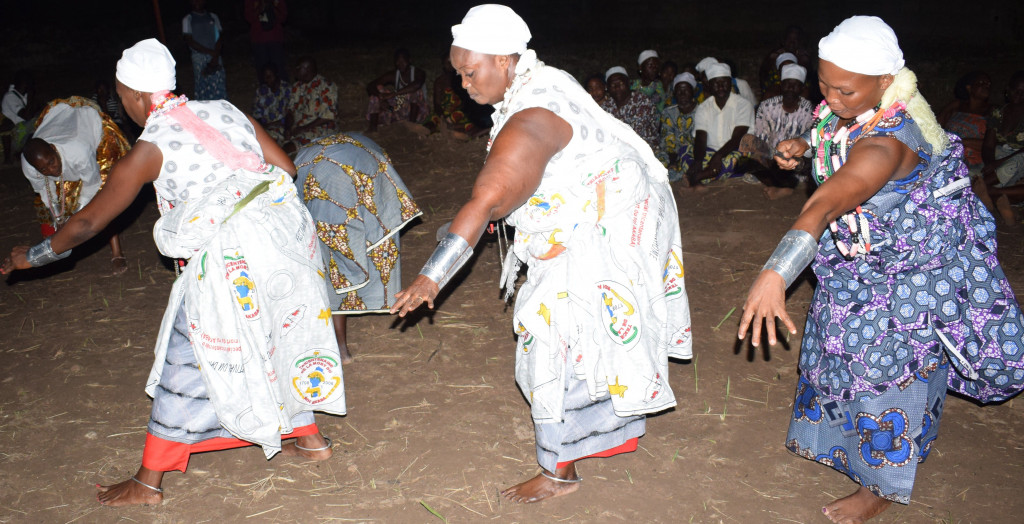
BY LOU SIFA
IMAGES BY ARSENE KASSEGNE
A pitch-dark, warm night has spread its wings over Cana, a historical town in Southern Benin. The moon and the stars have the night off, but a nice little breeze is blowing over the town when King Aïhotogbé, followed by the royal family—with The African’s reporters in tow—enters the vacant plot of land adjacent to the palace that serves as an entertainment arena for the king, to the tune of a loud gun salute. With His Majesty seated, several influential people, including the king’s cabinet members, stream in, go down on their knees a few feet from the king and perform the customary salute to the king that consists of kissing the ground, touching the ground with one’s hands a couple of times while uttering some words, while one of the king’s wives acknowledges the salute with words such as:
“Your salute is recognized.”
“Your praises have been accepted.”
The occasion is a ritual called Ganmêvo, literally “No hurry,” the generic name for all ceremonies in the Danxomê kingdom’s tradition that are intended to feed or entertain the spirits of deceased monarchs. It is rooted in the notion that one has to free one’s mind from all undertakings to be able to properly perform such important acts. This is the last of several Ganmêvo scheduled as part of the late king Langanfin’s centennial celebration organized by his grand-son and current king, His Majesty Dada Aïhotogbé Langanfin Glèlè in the last week of the three-month event. The purpose is to entertain the spirits of all the kings of the dynasty, except the last two, Gbêhanzin and Agoli-Agbo, whose reigns were stifled by the French brutal conquest of Danxomê in 1894.
DECEASED KINGS REINCARNATED BY LIVING WOMEN
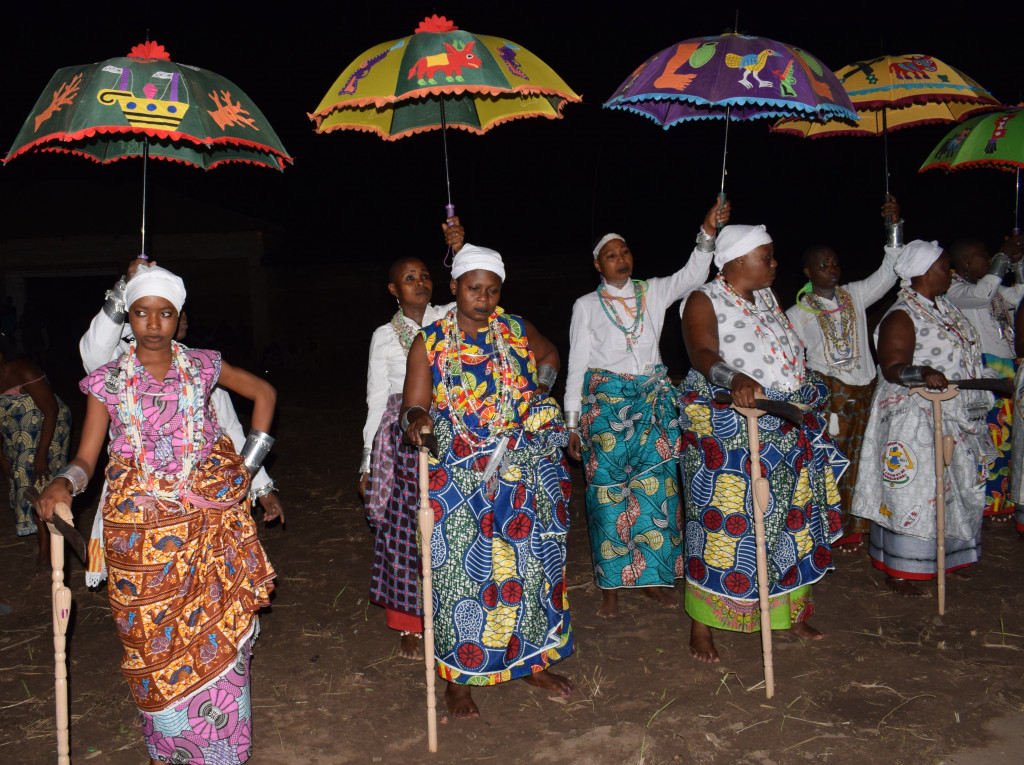
With the royal salutes now over, a small band that can be heard from inside the arena enters and gets settled, soon followed by a group of two dozen women dressed in unusual, bright outfits and wearing heavy, colorful necklaces. They are women who have reincarnated deceased kings of the Danxomê kingdom. They have women escorts, also dressed in an unusual fashion, who hold brightly-decorated umbrellas with the emblem of the corresponding king over the heads of the king-reincarnated women.
The latter, cutting across age groups and looking serene, with no smile on their faces throughout the night, circle around a couple of times and sit on stools facing the group of voodoo priests sitting on the ground across from them, on the other side of the dance area.
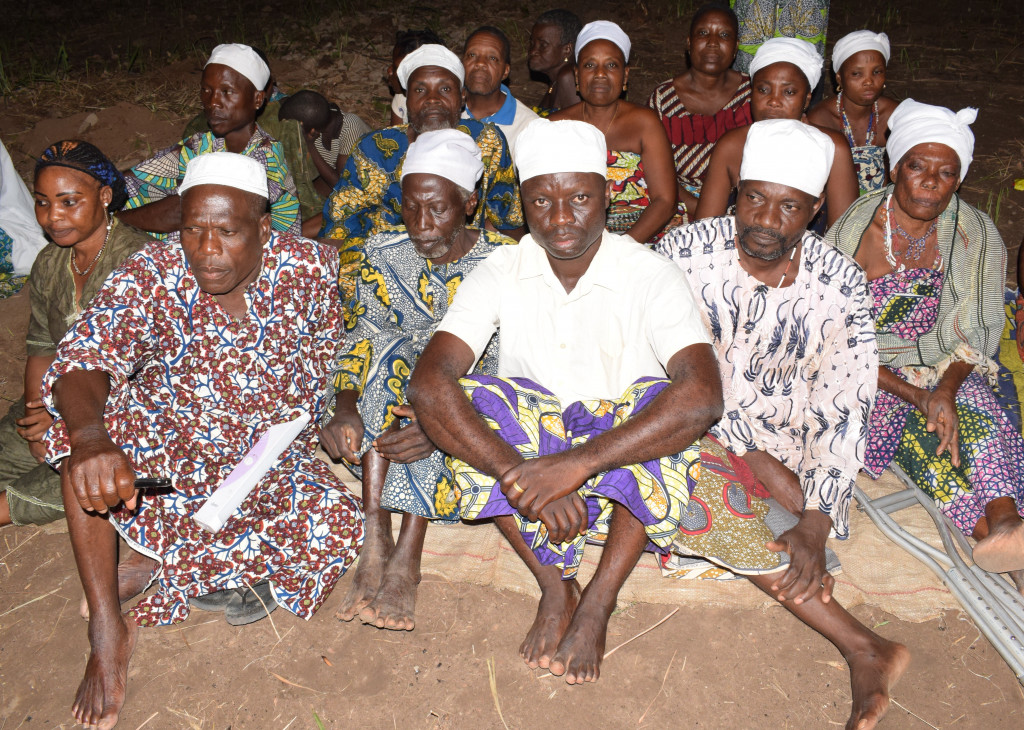
Like the voodoo priests, the women wear a white scarf on their head as a sign of purity. They walk barefooted and will do so for the rest of their lives. They will never wear plain clothes again and will never work again. Instead, they will be fed and cared for by the king. They live in a secluded area in the main palace, not the smaller palace where the king lives with his family.
MORE THAN A DANCE
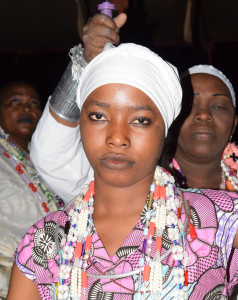
The awesome, nightly ceremony which is carried out in the letter of the royal tradition book as King Aïhotogbé watches with emotion, displays the depth of the philosophical values of the sophisticated Danxomê kingdom whose military, political, economic and cultural prowess earned it respect and admiration from the beginning of the 17th century—even beyond the area known today as the Republic of Benin—until the French invasion in the late 19th century.
The music, which has kept going non-stop since the arrival of the band, suddenly changes to a beat more solemn in tone. Then the king-reincarnated women start dancing in threes or twos, still with the umbrellas held over their heads by their escorts, from the spot where the band is playing—about 50 feet away from the king—stopping just a few feet away from the monarch. The intrinsic beauty, the rich outfits, the elegance and dignified demeanor of these kings in women’s bodies, coupled with their perfect execution of the dance, turn the four-hour-long event into something more than just a dance.
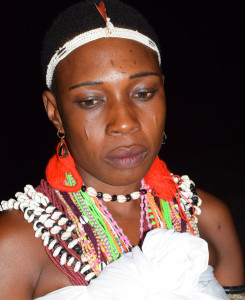
In-keeping with the kingdom’s tradition, King Aïhotogbé watches with a good deal of emotion that transpires even on the faces of most members of the royal family. Playing by the book of the kingdom’s tradition, the monarch is barefooted, has no hat on, to show respect for his reincarnated ancestors. It’s like a fairy tale unfolding before everyone’s eyes in the dark, late night, way past midnight.
The grand show, led by a heavyset but agile matron who watches over every detail, is directed by a dignitary of the palace, Dah Wankpo, who tells The African this ritual is being performed for the first time in thirty-five years. This crowned dignitary readily scolds a photo-journalist who makes the mistake of walking facing one of the king-reincarnated women in violation of one of the sacrosanct rules.

The royal dance is just one of several rituals carried out during the 57-day celebration of King Togongon’s centennial initiated by the reigning king. The centennial celebration was kicked off on December 25, 2016, the very date, one hundred years ago, the late king was appointed chief of the administrative unit—canton—of Cana, over the ruins of the one-time famous spiritual city of the Danxomê kingdom, one of the few pre-colonial African states that resisted French colonialism.
The mega celebration, which comes to a close this week, centered around several spiritual and cultural events that were actually intended for all of the previous monarchs of the Danxomê kingdom. The events included the following: Gbébiobio (literally “permission request”) to seek the blessings of the founder of the kingdom’s dynasty, Dogbagri, whose children settled in this general area around 1600 and to seek the support of the various voodoos that were established in Djako (one of the royal palaces in Cana) prior to French brutal colonization. There was also Toyiyi (“go fetch water”) when a group of women went to the river to fetch a sacred water that was used during all the ceremonies marking the events. That’s not to mention Houéplokplo, which entailed the purification of the palace, or a ceremony honoring the memory of the ferocious women warriors of the kingdom, the amazons.
